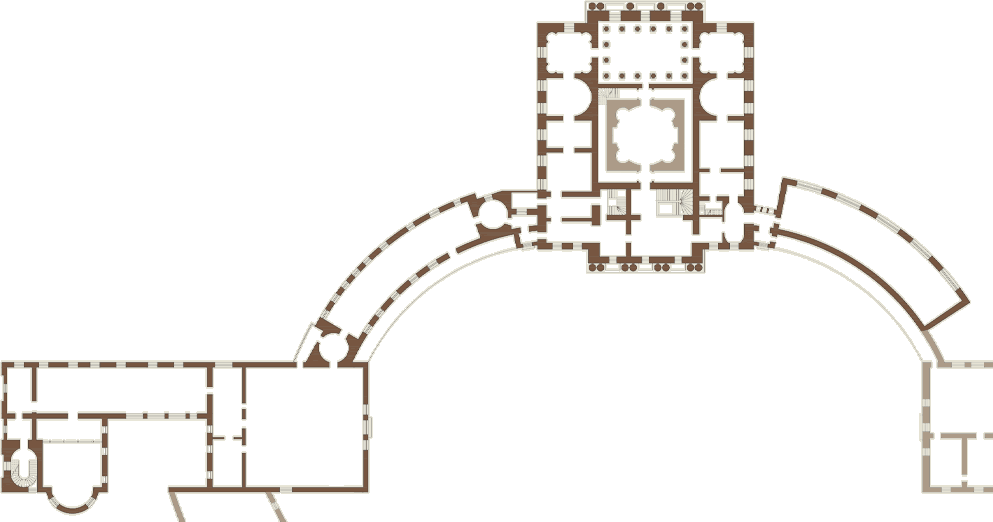The Chevalier Guard Room
Загрузка панорамы...
After the Knights Room, a small room for the guard was designed. In the palace, the guard duty was performed by officers of the Chevalier Guard Regiment. Just like the adjacent Anteroom, the Chevalier Guard room emerged when Vincenzo Brenna constructed the Church Building. A church staircase led to these service rooms from the street. According to the inventories of the 19th century, paintings in gilded frames once hung on the walls of this room. In 1872, under the Grand Duke Konstantin Nikolaevich, the Museum of Antiquities was established, the main exposition of which was located in the neighboring Knights Room. The Chevalier Guard Room became part of the museum and was turned into the Sarcophagi Room. Shelves were installed on the walls, displaying the collection of ash urns from the collections of Catherine II and Paul I. When the museum was opened after World War II, there was the final exhibition dedicated to the restoration of Pavlovsk.
Currently, small temporary exhibitions from the collections of the Pavlovsk Palace Museum are organized here.
The Chevalier Guard Room on the floor plane
- The Egyptian Vestibule
- The Carpet Study
- The Second Interconnecting Study
- The Main Staircase
- The Hall of War
- The Picture Gallery
- The Upper Vestibule
- The Greek Hall
- The Third Interconnecting Study
- The Italian Hall
- The Hall of Peace
- The Throne Room
- The Valet de Chambre Room of Paul I
- The Library of Empress Maria Feodorovna
- The Pantry
- The Dressing Room of Paul I
- The Boudoir
- The Orchestral Room
- The Rossi Study
- The State Bedroom
- The Knights Room
- The Rossi Library
- The Dressing Room of Maria Feodorovna
- The Chevalier Guard Room
- The Small Study of Emperor Paul I
- The Maid of Honour's Room
- The Anteroom (Turkish Room)
- The State Library of Paul I
- The First Interconnecting Study
- The Palace Church

Back
